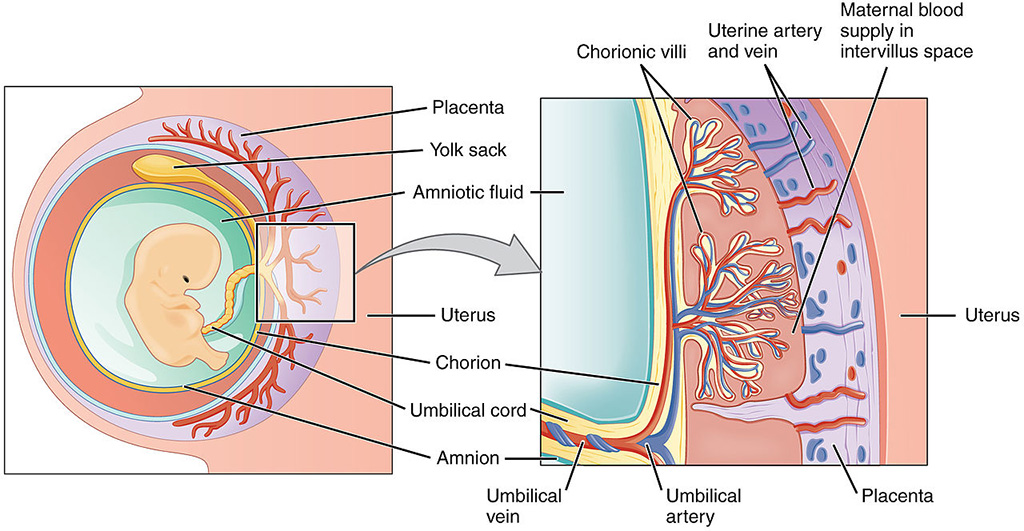Placental MicroRNAs Diagnosis Pregnancy Progress and Fetal Distress
By LabMedica International staff writers
Posted on 28 Sep 2021
Analysis of placental microRNAs (miRNAs), which also circulate in the maternal blood, represents a significant improvement to currently used pregnancy screening tools, allowing assessment of placental health, and therefore fetal health, in real time.Posted on 28 Sep 2021
The critical role of the placenta in successful pregnancy is clear, and there is also evidence linking developmental programming of chronic adult disease such as heart disease, diabetes, and obesity with the placental phenotype in utero. However, there are currently no non-invasive tests to determine which women are likely to develop pregnancy complications in routine use, nor is there a comprehensive reference set of miRNA expression during early pregnancy that can be used for development of pregnancy health biomarkers.

Image: Schematic view of the placenta (Photo courtesy of Wikimedia Commons)
MiRNAs comprise a class of about 20 nucleotides-long RNA fragments that block gene expression by attaching to molecules of messenger RNA in a fashion that prevents them from transmitting the protein synthesizing instructions they had received from the DNA. With their capacity to fine-tune protein expression via sequence-specific interactions, miRNAs help regulate cell maintenance and differentiation. In addition to miRNAs playing an essential role in tumor development, dysregulation of certain miRNAs has been associated with many different diseases, such as dementia and cardiovascular conditions.
Investigators at Flinders University (Adelaide, Australia) generated miRNA profiles using 96 placentas from presumed normal pregnancies, across early gestation, in combination with matched profiles from maternal plasma. Placenta samples ranged from six to 23 weeks’ gestation, a time period that included placenta from the early, relatively low but physiological (six to10 weeks’ gestation) oxygen environment, and later, physiologically normal oxygen environment (11 to 23 weeks’ gestation).
The results identified 637 miRNAs with expression in 86 samples. Of these, 374 were differentially expressed (DE) miRNAs between placentas from six to10 weeks’ versus 11 to 23 weeks’ gestation. Proportional change in expression of placenta-specific miRNA clusters was reflected in maternal plasma. In particular, the amount of a cluster of miRNAs from Chromosome 19, which are only made by the placenta and are present in maternal blood, changed in response to the initiation of maternal blood flow into the placenta after 10 weeks of gestation.
"Our group has had a long-term interest in developing screening tests to identify pregnant women early in pregnancy who are at risk of pregnancy complications," said senior author Dr. Claire Roberts, professor of medicine and public health at Flinders University. "The earlier we can identify those at risk the earlier we can implement extra clinical monitoring and prevention strategies."
The placenta miRNA study was published in the August 19, 2021, online edition of the journal RNA Biology.
Related Links:
Flinders University














